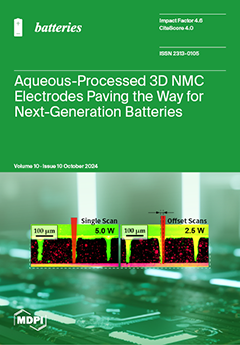The solid-state metal battery with solid-state electrolytes has been considered the next generation of energy storage technology owing to its superior safety and high energy density. But, unfavorable ionic conductivity and interfacial problems make it difficult to widely use in practice. In this work, Si
3N
4 was rationally introduced into the NASICON matrix as a sintering aid, and the influence of Si
3N
4 on the crystal phase, microstructure, electrochemical and electrical performance of Na
3Zr
2Si
2PO
12 (NZSP) ceramic was systematically studied. The results demonstrate that the introduction of Si
3N
4 can effectively lower the densification sintering temperature of Na
3Zr
2Si
2PO
12 electrolyte and enhance the room temperature ionic conductivity of the NZSP to 3.82 × 10
−4 S cm
−1. In addition, since Si
3N
4 has a high thermal conductivity and can inhibit the transmission of electrons between the grains of the electrolyte matrix, it will effectively hinder the generation of sodium metal dendrites and relieve the concentration of the heat source. Moreover, owing to the desirable interface compatibility of the Na and NZSP-Si
3N
4 electrolyte, the Na/NZSP-1150-1%Si
3N
4/Na symmetric battery exhibits excellent stability, and the electrode/electrolyte interface still maintains good integrity even after long-term cycling. The assembled Na/NZSP-1150-1%Si
3N
4/Na
3.5V
0.5Mn
0.5Fe
0.5Ti
0.5(PO
4)
3 cell manifests an initial specific capacity of 152.5 mA h g
−1, together with an initial Coulombic efficiency of 99.8%. Furthermore, after 200 cycles, the battery displays a capacity retention rate of 82%.
Full article





